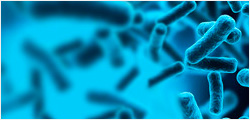Comparison of Protein C Tag Antibody, mAb, Mouse from (Left: GenScript A01774, 0.2 µg/ml) and Mouse Anti-Protein C mAb (Right: Roche, clone HPC4, 0.2 µg/ml) by Western blot. The assay was performed with purified N-terminal Protein C tagged fusion protein. The signal was developed with IRDye™ 800 Conjugated affinity Purified Goat Anti-Mouse IgG.
Comparison of Protein C Tag Antibody, mAb, Mouse from (Left: GenScript A01774, 0.2 µg/ml) and Mouse Anti-Protein C mAb (Right: Roche, clone HPC4, 0.2 µg/ml) by Western blot. The assay was performed with purified C-terminal Protein C tagged fusion protein. The signal was developed with IRDye™ 800 Conjugated affinity Purified Goat Anti-Mouse IgG
Western blot analysis of immunoprecipitates from Protein C tagged protein transfected CHO cell lysates. Lane 1: Protein C tagged protein transfected CHO cell lysates as input control. Lane 2: Immunoprecipitates of the Protein C tagged protein transfected CHO cell lysates with THE™ Protein C Tag Antibody, mAb, Mouse (GenScript, A01774). Lane 3: Immunoprecipitates of the Protein C tagged protein transfected CHO cell lysates with Mouse IgG Control (Whole Molecule), Purified (GenScript, A01007).
Immunocytochemistry/Immunofluorescence analysis of Protein C tagged protein transfected CHO cells
using THE™ Protein C Tag Antibody, mAb, Mouse (GenScript, A01774) and Mouse IgG Control (Whole Molecule), Purified (GenScript, A01007)
The signal was developed with FITC conjugated Goat Anti-Mouse IgG.
THE™ Protein C Tag Antibody (HPC4), mAb, Mouse
| A01774 | |
|
|
|
| ¥62,143.00 | |
|
|
|
|
|
|
| Ask us a question | |








































